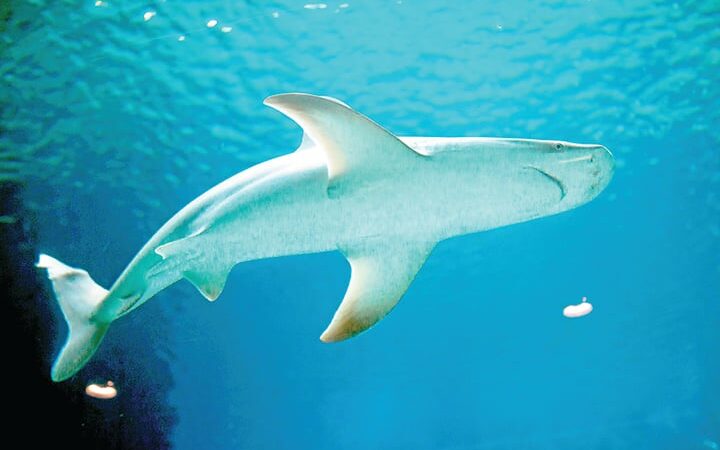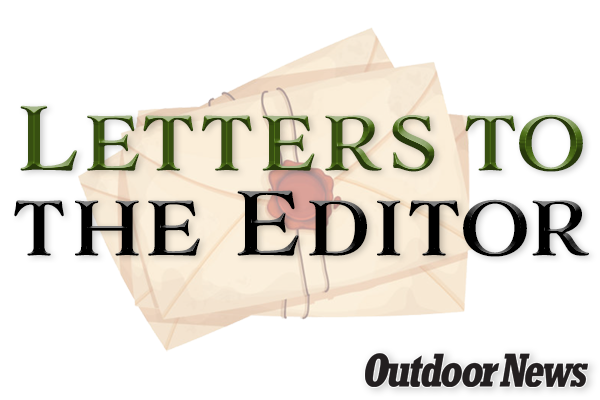The .410 is the little turkey gun that could – Outdoor News
Not all that long ago any “real” turkey hunter would have discredited the idea of using a .410 to hunt turkeys. Turkey hunters endured a period where it felt like if you were not shooting the biggest, baddest, and heaviest, 3 1⁄2-inch, 12 gauge load, you simply were not going to be able to kill that weary old gobbler.
They were unforgiving, shoulder-punishing monsters — the max dram equivalent of pushing 2-plus ounces of copper-plated lead shot, brought on brutal, bruise-inducing recoil.
Over the last few years there have been some monumental changes in turkey load technology; the largest effects being noticed on the small-bore scene.
Many firearm manufacturers now have .410 shotguns purposely built for turkey hunting in their lineup. These guns capitalize on screw-in chokes utilizing Tungsten Super Shot (TSS).
A regulatory change that took effect on Sept. 1, 2022, allowed the legal shot size to hunt turkeys in New York to change from No. 8 to No. 9. That was big news for this pipsqueak shotgun round.
Less really is more when it comes to TSS. The smaller shot size means more pellets per ounce: 227 more when comparing No. 9 to No. 5, to be exact.
The clincher is each one of those tiny No. 9 pellets is still carrying the same amount of energy as a lead No. 5. Think of TSS shot being a golf ball and lead shot being a Wiffle ball. Then, think about which one you could throw farther and which one you would not want to be hit with; the choice is clear.
The TSS advantage
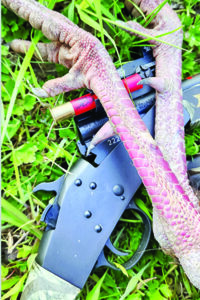
The onset of turkey hunters hanging up the 12 gauge and opting to tote a wee little .410 has been steadily growing in recent years.
Primarily regarded as a limited-range “kid’s gun” it still has a place in youth hunting, no doubt. Since the emergence of TSS, more and more veteran turkey hunters have ditched the heavy 12 gauge guns and are opting for featherweight .410s, which have almost no recoil.
TSS is not only an environmentally friendly shot substitution, but the ballistic performance far supersedes lead as well. The density of Tungsten shot comes in at 18.1 g/cc. Lead is a nominal 11.34 g/cc and steel shot is around 7.51 g/cc.
We were all up in arms when lead shot was banned from waterfowl hunting many years ago because steel shot simply was not very effective in comparison to lead shot.
The performance difference comparing steel to lead is very similar to the performance difference when comparing lead to TSS.
Ballistic testing data has shown No. 9 TSS retains enough energy out to approximately 72 yards when propelled at the typical muzzle velocity of most shotguns (1,100-1,200 fps). Not that it is suggested to take a 72-yard shot, but the tiny shot does carry enough energy to do the deed.
MORE TURKEY COVERAGE FROM OUTDOOR NEWS:
Get a gobbler going this spring with a barred owl call
Small parcels can yield big results for gobblers
Creating another generation of turkey hunters, Part 3: The hunt is on. Enjoy it.
The ability to utilize small shot size while delivering equivalent on-target energy as lead shot four sizes larger is where TSS really shines. Its minuscule size has numerous advantages. The largest factor is hits on target. No. 5 shot lead contains 135 pellets per-ounce; No. 9 TSS contains 362.
The improvement in pattern density at any range is mind-blowing. TSS shot does not deform either, which really helps pattern consistency by reducing flyers.
Also, TSS does not deform when going through a tight turkey choke, inherently producing much better patterns. Since it is smaller, harder, and does not deform, on-game performance is better as well. The smooth, hard surface of tiny pellets snakes right in-between feathers with almost no energy-robbing feather pull.
The only real con to TSS is price, as a single .410 shotgun shell can be around the $8 dollar price point. One other con may be the inability to easily find shot within game meat.
Biting down on a TSS No. 9 will send electricity coursing through your soul for a moment and may ultimately have you scheduling a dentist appointment.
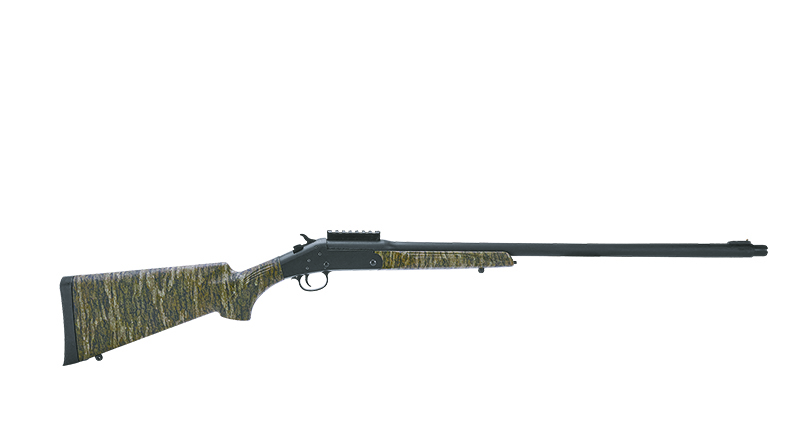
Using the .410
Throughout the 2023 turkey season, I found myself reaching for the .410 over the heavy gauge guns every single outing. A Steven’s Model 301 was my choice: A super-simple, break action, single shot.
Relative to average firearm price points, these guns are dirt cheap. Barely ringing up over the $200 mark. I did end up replacing the stock choke with a Patternmaster Code Black turkey choke and adding a Vortex Venom red dot sight as well.
The entire setup comes in right around 5 pounds. The difference between toting a 14 pound, 10 gauge gun, around the woods and a 5 pound firearm, is ridiculous, to say the least. I also take a fair share of youth hunters out, and this is the absolute perfect turkey gun for them as well.
Testing and patterning
After getting on point with regular run-of-the-mill lead loads to save money, it was time to see what this pipsqueak of a shotgun could really do.
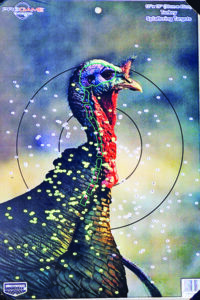
I had three different TSS loads to test pattern. The first was an off the shelf Browning load with 13⁄16-ounce of No. 9 shot. The three other custom loads were from Foxtrot, Burgess Creek, and Verdict ammunition. All three offered up 7⁄8-ounce of No. 9 TSS.
A patterning board and a turkey target were set up at a measured 40 yards and the testing commenced. Upon firing the commercially available Browning load, let me just say I was impressed and would absolutely hunt with the Browning load with zero reservations.
I cleaned the gun to give the other loads the same clean barrel assessment to keep all factors the same. All three custom loads were significantly better. The hand-loaded buffered loads ultimately yielded a better core pattern and a more even pattern overall.
I would say my particular gun liked the Burgess Creek offering the best. However, this may not be the case with your gun so albeit a good starting point, there is no substitute for real testing; not to mention it is just fun to do!
After patterning turkey guns for the last twenty-something years I would confidently say the .410, loaded with No. 9 TSS shot and proper choke configuration, patterned right on par with – and maybe even a touch better – than a 12 gauge 3 1⁄2-inch magnum loaded with 2-plus ounces copper plated lead No. 6 shot. I would not at all hesitate to take a 45 yard shot at a big tom.
There’s no muzzle blast, no recoil and it’s super lightweight. There’s also the ability to easily and confidently switch and take an off hand shot if need be. The same, if not better, range and patterns as the turkey guns of 10 years ago that punished your shoulder. What is not to love?
Obviously loading TSS into a 12 gauge shell has its advantages as well, mainly in the form of increased range and pattern density.
However, I can maybe think of one or two longbeards I have harvested in the past 15 years that would have been off limits and beyond the comfortable range capabilities for the .410. I would say 95% of the gobblers I have personally harvested have been under the magical 40 yard mark so why not use it? I am quite confident I have found my ideal turkey gun for the rest of my life.
The .410: not a gauge
The .410 (bore) is the only shotgun that is actually expressed as the diameter of the bore. Every other shotgun, from 28-gauge to 10-gauge is indeed expressed as “gauge.” Well, what exactly is gauge?
Gauge is a rather simple measurement of simply how many lead spheres of exact bore diameter it takes to equal one pound of weight. For example, the typical 12-gauge shotgun has an average bore diameter of .725 inches. So 12 lead spheres that have a diameter of .725 inches will equate to one pound.
The 20-gauge would be 20 lead spheres that are .615 inches in diameter and so on. The moral of the story: the .410 is a .410, not a .410 gauge.
– Jerrod Vila
Source: https://www.outdoornews.com/2024/04/06/the-410-is-the-little-turkey-gun-that-could/


